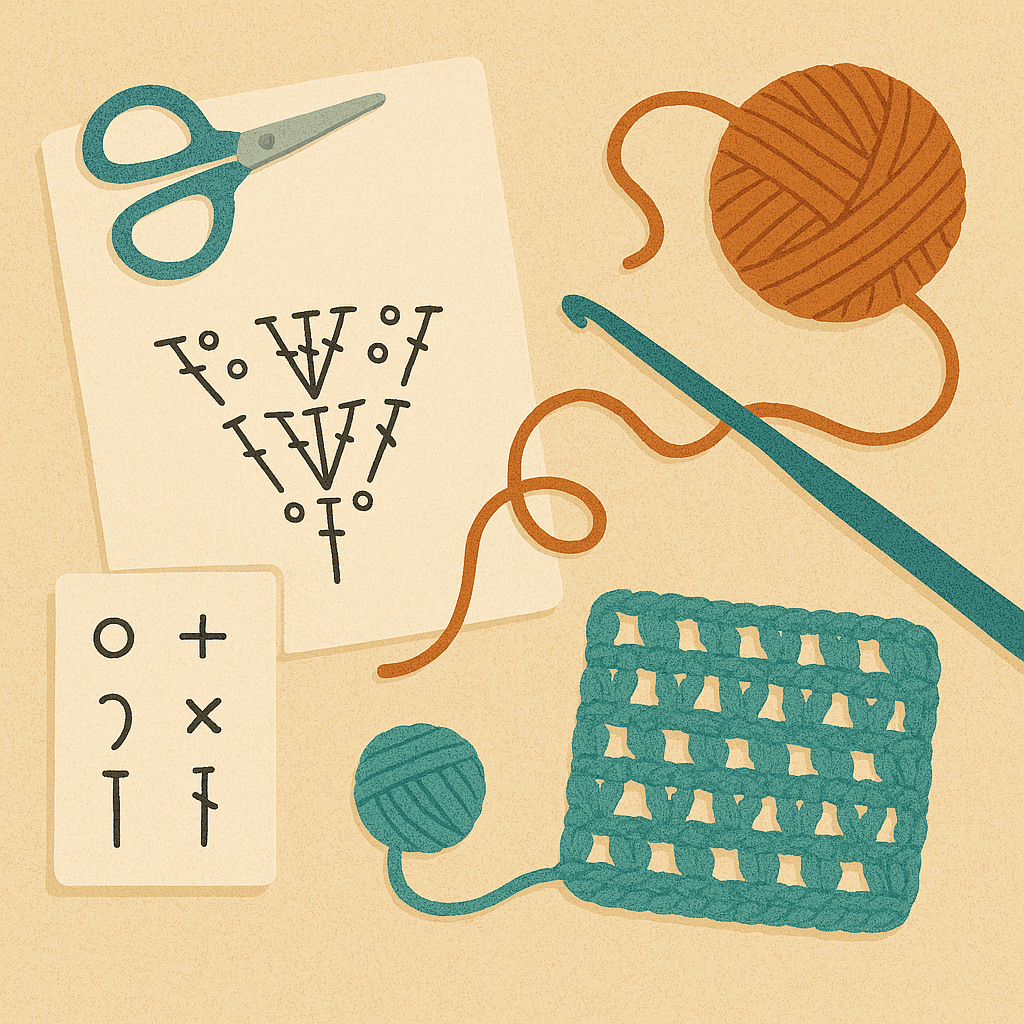Crocheting is a beautiful, relaxing activity that can be very rewarding. However, as with any new passion, beginners often make common mistakes. The good news? Any of them can be easily avoided – you just need to know what to look out for. Here’s a list of the most common stumbling blocks and how to prevent them.
1. Weave too loose or too tight
One of the most common problems is irregular thread tension. Meshes that are too tight make the work stiff and difficult to rework, and meshes that are too loose make it look sloppy.
How to avoid: Practice holding the yarn and crochet in a relaxed but controlled manner. Take time to rehearse until you find a natural rhythm. It is helpful to make a sample before each new project.
2. Omitting or adding meshes
If your knitting suddenly widens or narrows for no apparent reason, you are probably losing or adding meshes.
How to avoid: Regularly count the meshes in the rows and mark the first and last post with a marker. This will make it easier to control the shape of your knitting.
3. Not holding the crochet hook and yarn correctly
It seems like a small thing, but poor tool-holding habits can cause hand fatigue and even pain.
How to avoid: Experiment with different ways of holding your crochet (e.g. like a pen or knife) and yarn. Find the position that is most comfortable for you and doesn’t cause tension 😉.
4. Poor choice of yarn and crochet
Beginners often go for yarn that is too thin or complex fibres that are difficult to work with.
How to avoid: To start, choose a light, medium-thick yarn (e.g. worsted or DK) and an appropriately sized crochet hook (e.g. 4-5 mm). Avoid dark colours – it is difficult to see the eyelets in them.
5. Too ambitious a project to begin with
Wanting to make a blanket with hundreds of motifs or a dress as soon as you’ve learned the basics – that’s an easy route to frustration.
How to avoid: Start with small, simple projects: squares, placemats or headbands. This will allow you to practise your technique and gain confidence.
6. Lack of patience
Crocheting takes time, especially at the beginning. If you are too hard on yourself, you will easily become discouraged.
How to avoid: Treat crochet as a form of relaxation, not a race. Enjoy the process, not just the end result.
7. No rest for the hands
Long sessions without a break can lead to pain in the wrists or fingers. This can discourage you from continuing to work.
How to avoid: Take breaks every 20-30 minutes. Stretch your fingers, shake your hands, change your body position. Your body will thank you for it!
Everyone makes mistakes – it’s a natural part of learning. Don’t be discouraged! Over time, you’ll notice your movements becoming more confident and your work becoming more beautiful. 👌 The most important things are patience, attentiveness and… the joy of creation. 🥰




Ania :)
To cos idealnego dla mnie:) zawsze miałam problemy z szydełkowaniem, może teraz się to zmieni dzięki twoim poradą :)))
faustyna
Trzymak kciuki, może w końcu Ty i szydełko pójdziecie jedną parą? 😉
Lena
Zawsze chciałam umieć szydełkować ale nigdy mi to nie wychodziło. Serio Twoje porady są mega pomocne. Zabieram się już za przeglądanie reszty bloga 🩷
faustyna
Och, jak mi miło to czytać! 🩷 Bardzo się cieszę, że moje porady Ci się przydały! Szydełkowanie może wydawać się trudne na początku, ale z odrobiną cierpliwości i serca potrafi dać tyle radości. Trzymam za Ciebie mocno kciuki i mam nadzieję, że znajdziesz tu jeszcze więcej inspiracji! Gdybyś miała jakieś pytania – zawsze możesz do mnie napisać 🌸
Wera
Superowo!!!
faustyna
Ach, dziękuję z całego serca! 🩷 Twój entuzjazm jest naprawdę uroczy – to dla mnie wielka radość! 🌷